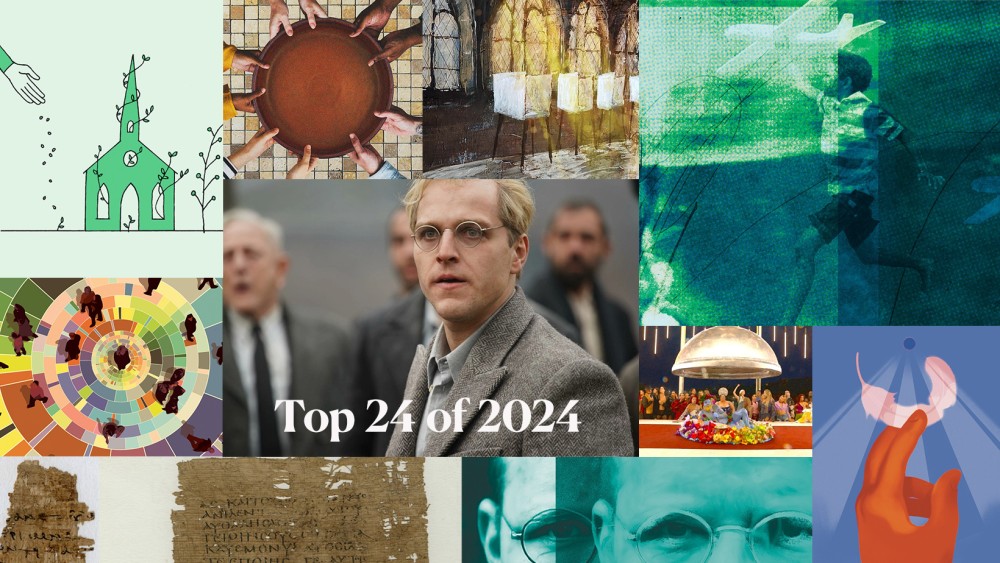Our top 24 of 2024
Happy new year! Here are the Century articles from last year that enjoyed the most online readers.

1. Mac Loftin: The new Bonhoeffer movie isn’t just bad. It’s dangerous.
By egregiously misreading Dietrich Bonhoeffer’s moral crisis, it primes viewers for violence.
2. Wendell Berry: Against killing children
We have become a society of people who cannot prevent our own children from being killed in their classrooms—and who do not much mind the killing of other people’s children by weapons of war.
3. Brandon Ambrosino: Jesus among the drag queens
Those who are offended by the Opening Ceremonies tableau should take another look at their New Testaments.
4. Debie Thomas: Which church is dying?
The church of empire might be. But I’m not ready to call time of death on the mystical body of Christ.
5. Victoria Barnett: There’s no such thing as a Bonhoeffer moment
Dietrich Bonhoeffer didn’t choose to be a martyr. He simply tried, as many others did, to be decent in the face of evil.
6. Yolanda Pierce: Showing up for church when I don’t want to
When I show up, God shows up—although not always in the sermon.
7. Elizabeth Schrader Polczer: Early Christianity, fragment by fragment
A new published volume of ancient papyri contains sayings, attributed to Jesus, that were previously unknown—including a dialogue with a disciple named Mary.
8. Brian Bantum: Can inclusive churches grow and thrive?
When my spouse’s church became more affirming, the major givers left.
9. Elizabeth Eisenstadt Evans: Facing theological ed’s existential crisis
Four schools and the creative paths they’re charting
10. James K. A. Smith: Wisdom from Augustine in an election year
Our so-called Christian politics have been captivated by the liturgies of the earthly city rather than the city of God.
11. Jon Mathieu: Trending topics: Exvangelical women’s memoirs
Five new memoirs by women who left evangelicalism
12. Olivia Brodsky and Joshua Stanton: Ten ways Christians can criticize Israel that aren’t antisemitic
Since October 7, many well-intentioned statements have undercut progressive Christians’ moral high ground by invoking antisemitic tropes. It’s an avoidable problem.
13. Reggie Williams: The tropes that birth the hero
It is admirable that Bonhoeffer endeavors to highlight Black life. But is the Black life of its representation playing in the dark of caricatured Black people?
14. Elizabeth Palmer interviews Munther Isaac: Palestinian and Christian in a violent time
“What does it mean to be church amid these very harsh circumstances?” asks Bethlehem pastor Munther Isaac.
15. Javier Viera: Kamala Harris’s interfaith identity could help her win the election
Engaging openly with her Christian, Hindu, and Jewish traditions also models a healthy way to build coalitions for social justice.
16. Brad East: Gods who make worlds
By definition, epic fantasy involves a world with a creator. Tad Williams’s Osten Ard is the best since Tolkien’s Middle-earth.
17. Richard A. Kauffman: How can a congregation change its culture?
It helps to focus less on structure and instead envision the church as an organism.
18. Samuel Wells: What does it mean to be an inclusive church?
Being a community means welcoming those with diverse views, not cocooning oneself with like-minded people.
19. Julian DeShazier: Why church marketing won’t work with Gen Z
Equity requires people with power giving some of it up. What if we applied this principle to young adult ministry?
20. Mary Clark Moschella: Teaching ministry students to ask beautiful questions
Narrative practice offers an excellent resource for the work of pastoral care.
21. Dawn Araujo-Hawkins: The roots of Hebrew Roots
A small but growing movement of Christians believes fervently that Torah observance is for everyone.
22. Philip Jenkins: Were the lost gospels really lost?
The myth that alternative gospels were suppressed by empire and only recently rediscovered is too good to be true.
23. Heidi Neumark: Conspiracies of goodness
When I fear a dystopian future, I hold on to stories of everyday resistance.
24. Rebecca Bratten Weiss: Faith at the expense of freedom
Catholic integralism is not fascism. But the two have often made common cause.





